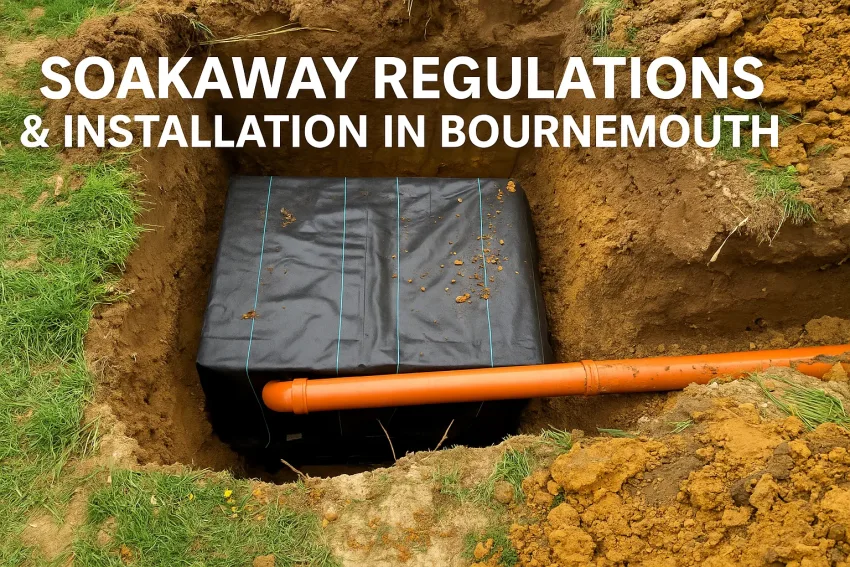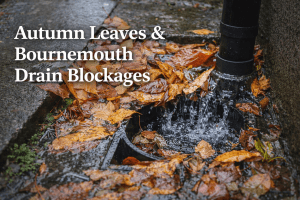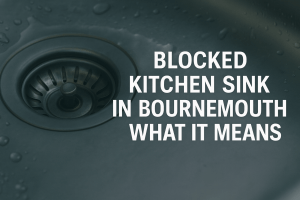When it comes to managing rainwater, a soakaway system is one of the most practical and eco-friendly drainage solutions. A soakaway allows surface water to drain into the ground naturally, preventing flooding, waterlogging, and pressure on local drainage systems.
At Bournemouth Drains24, we regularly install and maintain soakaways for both residential and commercial properties, ensuring full compliance with the latest UK building regulations.
New Build Drainage Regulations
For new builds, drainage systems must meet strict planning and environmental requirements. Soakaway installation is often mandated as part of sustainable drainage systems (SuDS). This ensures developments reduce surface water runoff and help protect the wider sewer network.
If you’re building a new property in Bournemouth, you’ll need to consider:
- Percolation tests – These check ground suitability. Clay-heavy soils may not allow proper soakaway function.
- Design compliance – Your soakaway must meet standards for size, depth, and location.
- Planning approval – Some soakaway systems require approval under local council SuDS guidelines.
Soakaway Building Regulations UK
Under Part H of the Building Regulations, soakaways must be designed and installed to safely manage rainwater. Regulations cover:
- Soakaway size building regulations – Typically based on rainfall intensity and the impermeable area it serves.
- Soakaway distance from boundary – Generally, soakaways must be at least 5 metres from buildings and 2.5 metres from boundaries, although local conditions may vary.
- Groundwater protection – Soakaways must not cause contamination or interfere with foul drainage systems.
Failing to comply can lead to flooding issues, property damage, and potential enforcement from local authorities.
Rainwater Soakaway Rules
The key rules for rainwater soakaways in the UK include:
- They must only be used for clean roof or surface water. Wastewater must go to the foul drainage system.
- They must be placed in soil that allows natural infiltration.
- They cannot be connected to the public foul sewer unless approved.
At Drains24, we provide site surveys and percolation testing to determine the most suitable system for your property.
Common Problems With Non-Compliant Soakaways
- Flooding and pooling around the property
- Structural damage from water pressure near foundations
- Backflow issues if installed too close to foul drainage
- Local authority enforcement if not built to regulations
Drains24 Soakaway Solutions in Bournemouth
Our specialist team provides:
✅ Site surveys and percolation tests
✅ Installation of compliant soakaways
✅ Drainage repairs and replacements
✅ Advice on planning and SuDS approval
Whether it’s for a new build, an extension, or replacing an old system, we ensure every soakaway meets UK building regulations.
Building Regulations – Drainage & Waste Disposal
FAQs About Soakaway Regulations
What is the minimum distance a soakaway should be from a house?
At least 5 metres from the building foundations.
How close to a boundary can a soakaway be?
A soakaway must be a minimum of 2.5 metres from the boundary line.
How is soakaway size calculated?
The size depends on the impermeable area it serves and results from a percolation test.
Do all new builds require a soakaway?
Yes, unless an alternative SuDS-approved drainage system is agreed upon with the local council.




